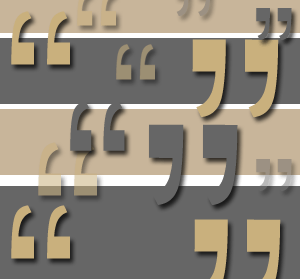
Roleplaying with MySpace
On MySpace, fans of cult television shows can put aspects of their own personality into a profile for a TV character. By then communicating with other character profiles, the fan roleplays the character and rewrites the television story. There is a long history of fans writing fan fiction, works of art that steal characters, stories, and themes from existing television shows (the classic example is Star Trek). Fans now use social network sites like MySpace.com to interact with and communicate as characters from television shows. This interaction illustrates a difference between fan fiction written on a fan fiction website like fanfiction.net, and the fan fiction/character creation that can occur on MySpace. Fan fiction on MySpace doesn't involve stealing characters, but rather performing characters within a community of other fans.
For fans of television shows like Veronica Mars, Gilmore Girls, Star Trek, Doctor Who, The Office, or other shows with cult followings, MySpace offers the perfect place to develop additional identity information for characters on the show. A user can design a MySpace profile for anyone, real or fictional. Most MySpace profiles represent aspects of the creator's personality. (For an example and a link to my profile, click here.) On a MySpace site, a user might put up text that describes his or her personality traits (likes to laugh, highly logical), illustrates her or his personal opinions (favorite films, favorite television shows, favorite books), and displays personal information (relationship status, hometown, college). All of these characteristics fit together on a MySpace site in order to display an online identity, or persona, for the user. The pictures that users can up on MySpace say a lot about the type of persona they want to create.
But for fans of cult television on MySpace, they can also use the site to make profiles for characters just as easily as they can make profiles for themselves. By networking different profiles together as friends, and then using different identifying sections on each profile to write and perform character identity, fans can interact as the characters. They don't write fan fiction, but instead roleplay as these characters, making connections through the cultural, communal relationships of members of the fan community. Because MySpace allows profiles to link to other profiles, each profile becomes a hub in an individual network. I can be friends with 10 people, and those people can be friends with 10 other people. These networks of friends show up on my profile, and I can interact with them by typing messages or leaving comments on their profile. Since MySpace doesn't show a difference between real world and character personas, the real world personas and character personas can mingle.
There are two important lessons we can learn from this new type of digital fan roleplay. The first lesson that fans can teach us is that we can see how our identities and others' are fragments. Before the Internet, any person's identity would have been intimately tied to his or her own physical body. The body provides a visual sense of who we are; we are identified by physical, observable bodily factors: our race, our sex, and our facial features. Online, however, the physical, observable body is absent. No longer linked to the body, an online identity can be constructed in a variety of ways. We can choose what we look like, we can choose different characteristics of our personality, and we can even change our sex. Fans illustrate this on MySpace by roleplaying with character identities. They can change aspects of the character's identity on MySpace by rewriting the characteristics of the characters' personality and the TV show plotline.
This illustrates the second lesson of digital fan roleplay. By using character personas on MySpace, fans also demonstrate the way that MySpace profiles become tied to cult TV narrative. Fans can make connections between mediated narratives and their own identities. By inserting themselves into the life of the character, through interaction with different MySpace profiles, fans can roleplay themselves into the story. For example, a fan of Gilmore Girls recently created profile for the character of Dean. Writing comments back and forth with a different character profile, the fan writes a dialogue with another fan. By posting comments in character back and forth between the two personas, the two fans can roleplay a new narrative of Gilmore Girls. But in doing so, they are also putting their own identity characteristics into the program, because they aren't the characters. They use their own identity to add elements that aren't in the text.
For fans on MySpace, the social network offers a new reality made up of fictional characters. Fans inhabit a new space--their space--in which they become part of the story. They are not changing the television show they love, but the television show they watch does change for them, subjectively. MySpace is a new form of fan fiction, one where the fans don't have to steal the characters, but can play with them instead.

